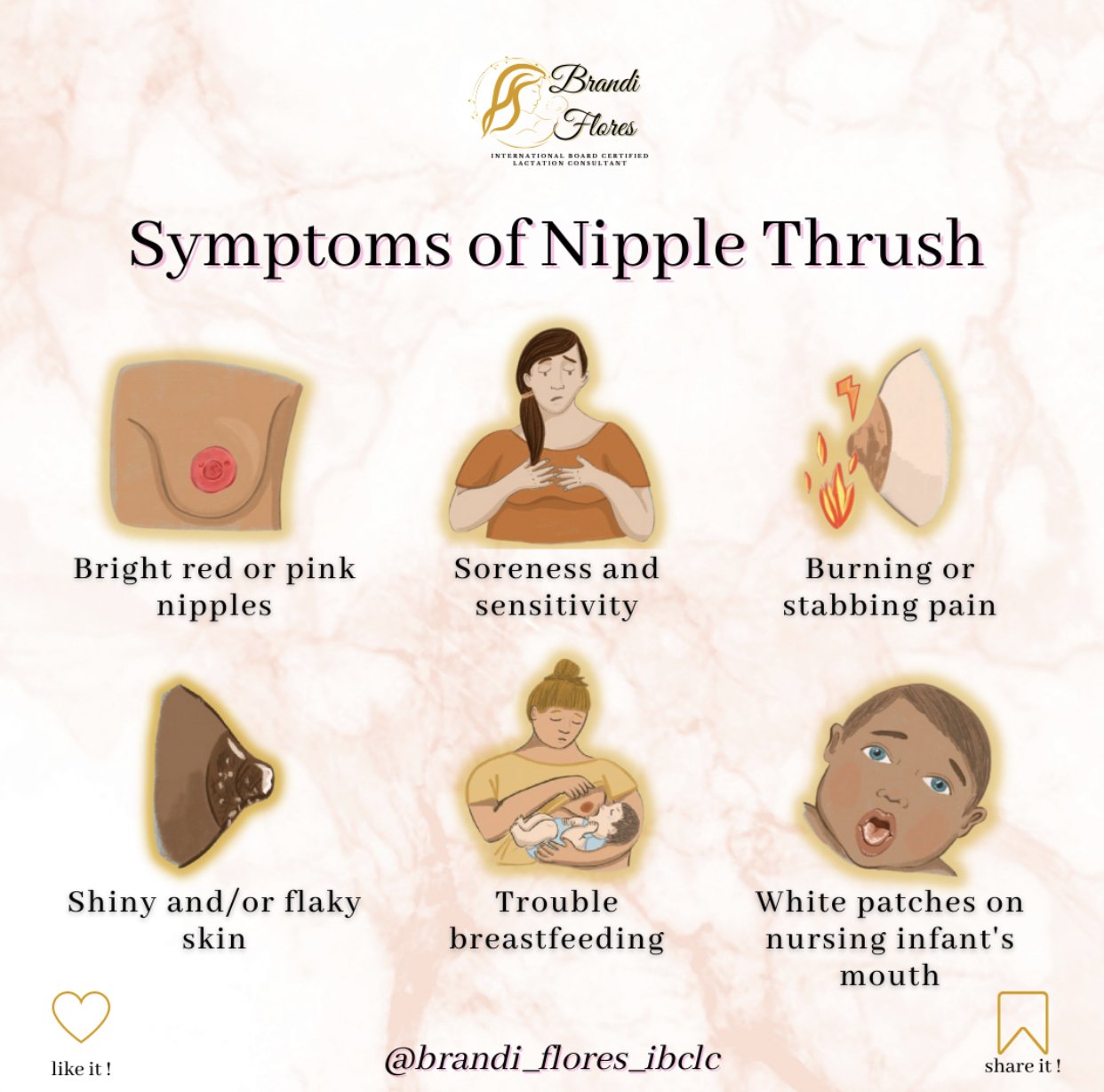Nipple Thrush
Breast nipple thrush is a common yeast infection. In most cases, it occurs while the mother is breastfeeding, but it can occur at any time of the day or night. Treatment for both oral and vaginal thrush relies on the use of ointments or gels containing antifungal agents.
Within six weeks after giving birth, nipple thrush symptoms are most common.
Symptoms of nipple thrush might be mistaken for other types of nipple pain, such as those caused by injury or infection.
Nipple thrush is brought on by a yeast infection (Candida). It is most frequent while nursing, but it can occur at any period of life.
In most cases, nipple thrush is diagnosed by comparing the symptoms of the parent and the child. Breast milk and nipples can also be tested for the presence of yeast. Healthcare practitioners can't always detect yeast in the breast or breast milk in patients with nipple thrush symptoms.
When it comes to treating nipple thrush, a topical antifungal drug is commonly used. Nystatin, miconazole, and clotrimazole are some of the most commonly prescribed antifungal drugs. As an antifungal therapy alternative, gentian violet can also be used.
Nipple fissures, which are common in people who are also infected by bacteria due to nipple thrush, may need the use of topical medicines. Topical steroids may also be utilized for persons with extremely irritated nipples.
